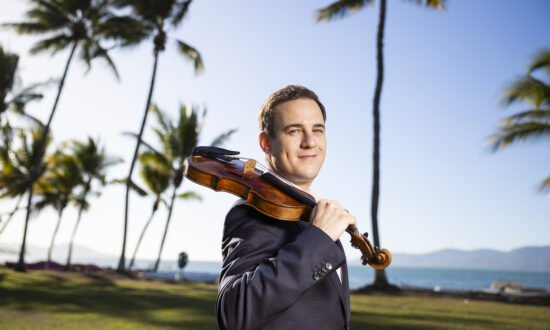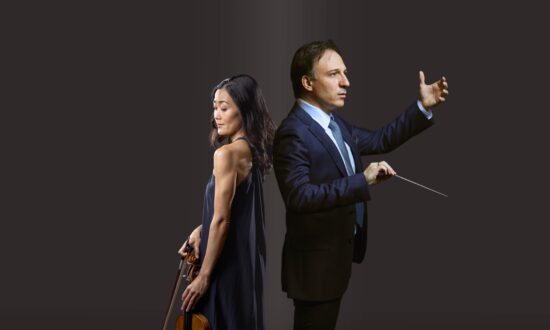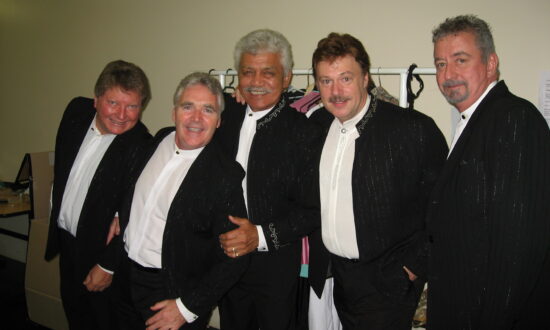Beer ads and the movie Excalibur have made its spectacular, pounding chorus “O Fortuna” instantly familiar, but Carmina Burana is in reality a darkly satirical work that powerfully and symbolically holds up a torch against the cruel, evil hand of fate.
Imagine, for a moment, bands of disaffected youths roaming across 13th-century Europe singing bawdy, pagan songs – for these were the real inspiration behind Carl Orff’s famous score.
These Goliards, as they were called, were university students and clerics who delighted in ridiculing a greedy, corrupt Church to the accompaniment of fiddles, harps, recorders and hurdy-gurdies. The medieval singer-songwriters would be forgotten today but for the fact that 318 of their verses are preserved in a manuscript called Carmina Burana, or Songs from Beuern, referring to the Bavarian region of southern Germany where the collection was rediscovered in 1803.
Orff was the first composer in modern times to set eyes on these ancient songs, and instantly he took a liking to their subversive themes and images of drinking, gambling and sex.
The result is one of the most forcefully rhythmic compositions in 20th-century music. Premiering in 1937 as political storm clouds were gathering over Europe, his “scenic cantata” initially attracted censure from Nazi officials for its erotic content, but later the party came to approve of its austere, direct style.
So there is this less savoury aspect to consider, but the fact remains that Orff – otherwise mainly known for his Schulwerk pieces for teaching participatory music to schoolkids – had created one of the 20th-century’s most recognisable and enduring concert works. The only problem is its size. Requiring 200 or so orchestral players and singers, the logistics of staging this massive cantata are a major challenge.
The work’s huge size actually makes it well suited to an outdoor stadium performance
Last year in March, State Opera South Australia very nearly came to presenting Carmina Burana at Memorial Drive Park with the Adelaide Symphony Orchestra, but sadly this show was one of the early casualties during Adelaide’s first COVID-19 lockdown.
The ASO plans to rectify that in a performance set to take place at the Adelaide Showground on November 27 as part of its Festival of Orchestra, a new series of outdoor evening concerts planned for November 24 to December 4. Graduate Singers, the Elder Conservatorium Chorale and Young Adelaide Voices will be joined by soprano Jessica Dean, tenor Andrew Goodwin and baritone Samuel Dundas.

Conductor Luke Dollman.
Benjamin Northey was down to conduct, as indeed he was last year, but due to travel restrictions his place will be filled by Luke Dollman.
“The work’s huge size actually makes it well suited to an outdoor stadium performance,” says Dollman. “It is similar in scale to Mahler’s Eighth and calls for massed choir and large orchestra featuring triple woodwinds and brass, two pianos and an extensive percussion section.
“So there will be a lot of performers on stage. Orff’s musical language, which is so strongly rhythmic, also lends Carmina Burana to open-air performance.”
As he flicks over pages of the score, Dollman shares his enthusiasm for Orff’s music.
“A lot of people will be familiar with the opening chorus ‘O Fortuna’, but I am also looking forward to introducing listeners to the myriad of other songs that make up Carmina. There is a wide range of material in it that encompasses many solo songs and smaller choruses about spring, nature, love, dancing and other facets of medieval life.
“Orff was keen to capture that world, but he was also conveying the vision of his own time. He picked through the manuscript’s poems and songs and chose those which had a particular resonance with him and which reflect his own time in the 1930s. The sound he brings to them shares a lot in common with Stravinsky.”
The Showground’s main arena will be transformed to host the Festival of Orchestra, with a seating capacity of 5000 and food and refreshments available. Ticket buyers will be able to choose between The Lawn (a grassed area closest to the stage), The Garden (picnic table seating for group bookings) and The Steps (general admission offering tiered seating; BYO cushions or blankets are recommended). It will be a catered venue with licensed bar, and entrance to FOFO events is via Rose Terrace from the Kidman gates.
The festival is a new community venture for the ASO, and managing director Vincent Ciccarello says the Showground was chosen for its location because it “represents fun and happy memories for hundreds of thousands of South Australians”.
“FOFO really is primarily a response to COVID,” he explains.
“How do you socially distance large numbers of people, safely? Outdoors, is the most obvious answer. And so we set about curating a series of outdoor concerts that would not only appeal to a wide variety of audiences, but also maximise the festival infrastructure.
“One of the questions we are asked most often is when the ASO will return to presenting outdoor concerts. The public really loves them. That’s partly to do with the atmosphere of being out in the open, under the stars on a beautiful night; but also because it’s a more relaxed environment, where people can sit and enjoy the concert away from the confines of a theatre. From the ASO’s point of view, it removes a barrier to attendance.”

Get InReview in your inbox – free each Saturday. Local arts and culture – covered.
Thanks for signing up to the InReview newsletter.
Before Carmina starts at the November 27 concert, three other works will be performed. These are Sculthorpe’s Earth Cry and two community-based projects, the first of which, Bula Yabru Banam, is a musical evocation of Indigenous stories originating from the Bundjalung community on the Gold Coast. Featuring digeridoo, boomerangs and water percussion with the orchestra, it was created by Luke Harrald and Grayson Rotumah of the University of Adelaide’s Centre for Aboriginal Studies in Music.
The second, “The 2016 Floods”, is part of a larger work entitled Floods of Fire that deals with the theme of natural disasters and was devised by jazz violinist Julian Ferraretto with students from Carlton School in Port Augusta.
Carmina Burana, will be performed by the Adelaide Symphony Orchestra and conducted by Luke Dollman on November 27 as part of Festival of Orchestra, which takes place at the Adelaide Showground from November 24 to December 4.
Support local arts journalism
Your support will help us continue the important work of InReview in publishing free professional journalism that celebrates, interrogates and amplifies arts and culture in South Australia.
Donate Here




